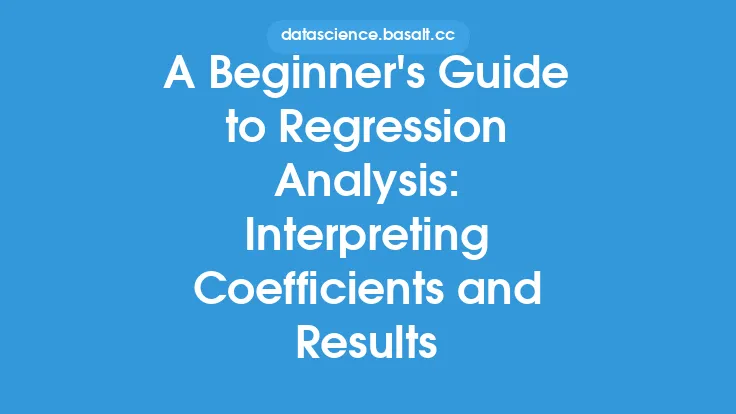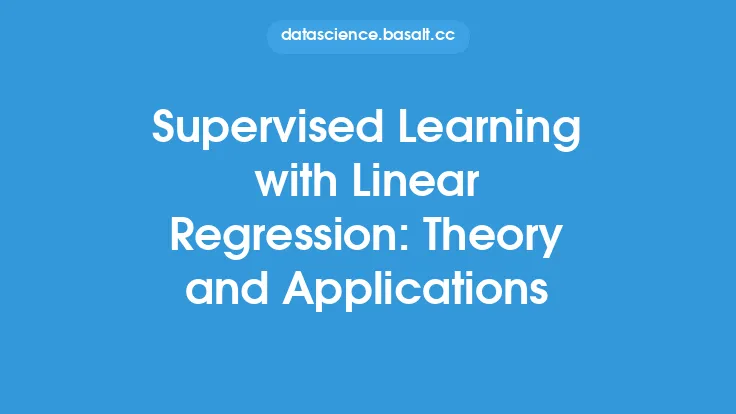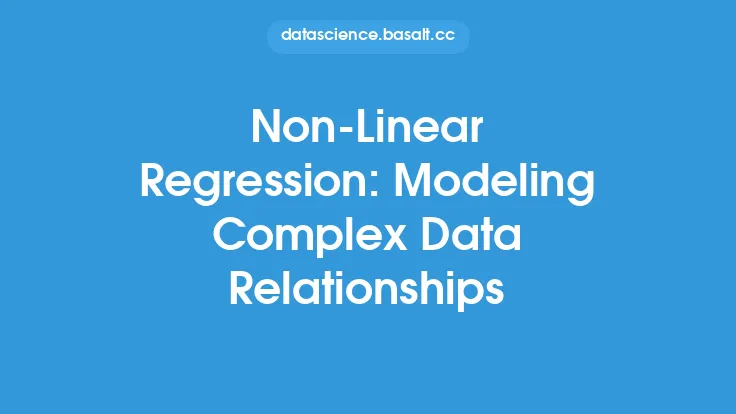Simple linear regression is a fundamental concept in statistics and machine learning, used to model the relationship between a dependent variable and a single independent variable. This technique is widely used in various fields, including economics, finance, and social sciences, to analyze and predict the behavior of a continuous outcome variable based on a single predictor variable. In this article, we will delve into the details of simple linear regression, its assumptions, and its applications.
Introduction to Simple Linear Regression
Simple linear regression is a statistical method that aims to establish a linear relationship between a dependent variable (y) and a single independent variable (x). The goal is to create a linear equation that best predicts the value of the dependent variable based on the value of the independent variable. The linear equation is typically represented as y = β0 + β1x + ε, where β0 is the intercept or constant term, β1 is the slope coefficient, x is the independent variable, and ε is the error term.
Assumptions of Simple Linear Regression
For simple linear regression to be applicable, certain assumptions must be met. These assumptions include:
- Linearity: The relationship between the dependent variable and the independent variable should be linear.
- Independence: Each observation should be independent of the others.
- Homoscedasticity: The variance of the error term should be constant across all levels of the independent variable.
- Normality: The error term should be normally distributed.
- No or little multicollinearity: The independent variable should not be highly correlated with itself.
- No significant outliers: The data should not contain significant outliers that can affect the model's performance.
Estimation of Model Parameters
The parameters of the simple linear regression model, β0 and β1, are estimated using the ordinary least squares (OLS) method. The OLS method minimizes the sum of the squared errors between the observed values and the predicted values. The estimated values of β0 and β1 are denoted as b0 and b1, respectively. The formulas for estimating b0 and b1 are:
b1 = Σ[(xi - x̄)(yi - ȳ)] / Σ(xi - x̄)²
b0 = ȳ - b1x̄
where xi and yi are individual data points, x̄ and ȳ are the means of the independent and dependent variables, respectively.
Coefficient of Determination (R²)
The coefficient of determination, R², is a statistical measure that evaluates the goodness of fit of the simple linear regression model. R² represents the proportion of the variance in the dependent variable that is explained by the independent variable. The value of R² ranges from 0 to 1, where 0 indicates that the model does not explain any of the variance, and 1 indicates that the model explains all of the variance. A high R² value indicates a good fit of the model to the data.
Hypothesis Testing
Hypothesis testing is used to evaluate the significance of the simple linear regression model. The null hypothesis is that the slope coefficient (β1) is equal to zero, indicating no linear relationship between the dependent and independent variables. The alternative hypothesis is that the slope coefficient is not equal to zero, indicating a significant linear relationship. The test statistic is calculated using the formula:
t = b1 / (s / √Σ(xi - x̄)²)
where s is the standard error of the estimate. The test statistic is compared to a critical value from the t-distribution, and if it exceeds the critical value, the null hypothesis is rejected, indicating a significant linear relationship.
Applications of Simple Linear Regression
Simple linear regression has numerous applications in various fields, including:
- Predicting continuous outcomes: Simple linear regression can be used to predict continuous outcomes, such as stock prices, temperatures, or energy consumption.
- Analyzing relationships: Simple linear regression can be used to analyze the relationship between two variables, such as the relationship between the amount of exercise and weight loss.
- Identifying trends: Simple linear regression can be used to identify trends in data, such as the trend in sales over time.
- Making informed decisions: Simple linear regression can be used to make informed decisions, such as determining the optimal price for a product based on its demand.
Limitations of Simple Linear Regression
While simple linear regression is a powerful tool for analyzing relationships between variables, it has several limitations. These limitations include:
- Assumption of linearity: Simple linear regression assumes a linear relationship between the dependent and independent variables, which may not always be the case.
- Limited to a single independent variable: Simple linear regression is limited to a single independent variable, which may not capture the complexity of real-world relationships.
- Sensitive to outliers: Simple linear regression is sensitive to outliers, which can affect the accuracy of the model.
- Assumes homoscedasticity: Simple linear regression assumes constant variance across all levels of the independent variable, which may not always be the case.
Conclusion
Simple linear regression is a fundamental technique in statistics and machine learning, used to model the relationship between a dependent variable and a single independent variable. The technique is widely used in various fields to analyze and predict the behavior of continuous outcome variables. While simple linear regression has several limitations, it remains a powerful tool for understanding relationships between variables and making informed decisions. By understanding the assumptions, estimation of model parameters, and applications of simple linear regression, researchers and practitioners can effectively use this technique to gain insights into complex phenomena.





